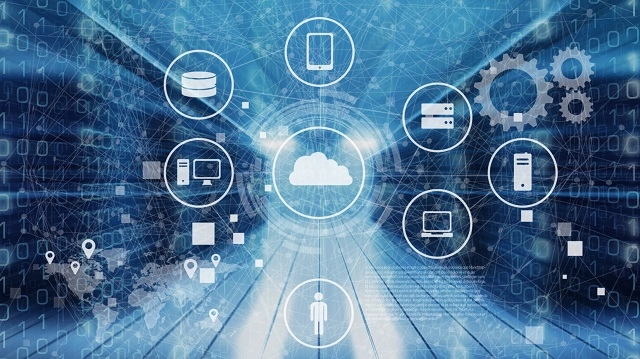Fortinet Acquires Next DLP Strengthens its Top-Tier Unified SASE Solution
Read the release
Cloud security for software-as-a-service (SaaS) applications operates under a shared responsibility model, with responsibility for data protection shared between a cloud service provider (CSP) and its customers. The CSP is responsible for providing a secure environment for the SaaS application itself and the cloud infrastructure on which it runs. This includes ensuring the security of various infrastructure components such as hardware, storage devices, and networks.
Customers are ultimately responsible for protecting their data, but this can be challenging due to the CSP's level of control over security procedures and practices.
Organizations do not have direct input into aspects of how their data is protected. The customer has to trust and rely on the ability of their CSP to secure SaaS applications, along with the data the apps store and process.
SaaS companies can protect sensitive customer data in several ways. Customers should carefully research prospective SaaS solutions to assess the provider's cybersecurity measures, and organizations should be skeptical of engaging a CSP that does not provide an acceptable level of security.
In this post, we’ll review some of the most impactful ways SaaS providers can protect customer data.
In this article:
Challenges in SaaS data security include misconfiguration, poor monitoring, limited cloud usage visibility, account hacking, and shortcomings in cloud security architecture.
Security misconfiguration occurs when default security settings are left unchanged or improperly configured, leading to vulnerabilities that can expose sensitive data to unauthorized access, theft, or compromise. Monitoring and logging present a significant challenge in ensuring data security within SaaS environments, as it becomes crucial in identifying potential vulnerabilities or anomalies.
The increasing popularity of SaaS has introduced challenges in maintaining data security, particularly regarding the visibility of cloud usage. Account hijacking is a significant challenge in SaaS security, with unauthorized individuals gaining access to user accounts and assuming control for malicious purposes.
Organizations often rely on SaaS providers for data protection, assuming that the vendors are responsible for protecting customer data. However, it is important for organizations to be aware of their own responsibilities and implement security measures and best practices for SaaS data protection to maintain a strong SaaS security posture.
 |
Strong data encryption protocols should be one of the first security measures implemented to protect SaaS customer data. Encrypting data makes it unusable to entities that cannot decrypt it, rendering the information useless to threat actors attempting to compromise it.
Because encrypted data is useless without the decryption keys—for both threat actors and internal authorized users—efficient encryption key management is a necessity. The keys must be protected from unauthorized use while also being available to authorized personnel to facilitate business operations.
Providers should protect SaaS data by regularly backing it up. They should also have the ability to quickly recover an organization’s data to address a hardware failure or accidental data loss scenario.
Additionally, customers should insist on recovery testing to ensure systems can be restored to maintain access to their valuable SaaS data.
 |
A key aspect of protecting SaaS data is minimizing the potential risks posed by external threat actors. A CSP should have a strong intrusion detection solution in place to identify potentially malicious entities that may threaten security.
The solution should include measures to contain intruders and quickly eliminate them from the environment to mitigate potential harm.
Role-based access management enables organizations to prevent unauthorized access to sensitive data. Only authorized personnel with a valid business justification should be able to access the data, while further protection should be provided by implementing a strong password policy and multi-factor authentication for authorized users.
 |
All CSP employees should receive cybersecurity awareness training that addresses their role in protecting SaaS data. This includes ensuring they understand the limits of their access to the information and the various ways threat actors may attempt an attack.
Any employee training provided should be periodically revisited to stay abreast of emerging threats and promote organizational security-consciousness.
SaaS providers must have incident response plans in place to effectively address security incidents that may affect their ability to protect and maintain access to customer data. These plans should be tested and updated regularly to reflect changes in the environment as well as new threats to the environment.
 |
Regulatory compliance can be challenging for companies that use SaaS products to store and process regulated data. CSPs must comply with the data protection guidelines that apply to the customer data they process.
To ensure they remain compliant, organizations should insist on verification that the necessary data protection controls are in place, as they may be held liable for any violations.
CSPs need to remain vigilant against the constantly evolving threat landscape. This requires regular security audits, including measures such as penetration testing, that seek to proactively identify vulnerabilities that could allow threat actors or unintentional insiders to expose cloud data.
In order to be most effective in this capacity, a CSP should be taking advantage of the most up-to-date technologies, such as machine learning, to power its security solutions.
 |
In the event of a widespread outage that affects its physical data center, a CSP needs to have a viable disaster recovery plan. As with incident response plans, these plans should be tested regularly and updated when necessary.
As the customer, you’ll need to ensure your business-critical SaaS data will be available after a disaster.
Data loss prevention (DLP) software offers organizations additional protection for SaaS data. An effective DLP solution automates the enforcement of a company’s data handling policy to ensure that sensitive and high-value information is not misused. It's an essential component of SaaS security posture management, a comprehensive approach to automating data security, mitigating risks, and ensuring proper configuration and protection of SaaS applications.
The Reveal Platform by Next protects an organization’s valuable data from deliberate data breaches initiated by external threat actors as well as data leaks from unintentional insider threats, which can be as damaging as a successful external attack. The platform also provides user training at the point of risk to promote a more security-conscious workforce.
Adding Reveal to your security stack enhances the SaaS data loss prevention afforded by your CSP. It ensures data is not misused for any reason and prevents sensitive information from leaving the organization if other defenses fail.
Watch an on-demand demo or schedule a time to see Reveal in action.
 |
Why is it important to test and update incident response and disaster recovery plans?
Testing and updating incident response and disaster recovery plans is critical to ensure they work correctly when needed. More specifically, testing will identify potential gaps in the plan that need to be filled to address business continuity requirements. The last thing you want is to discover the plan is insufficient as you are trying to recover from a security incident or disaster.
Should decryption keys be shared between a customer and a provider?
Decryption keys should typically not be shared between customer and provider. In most cases, companies will want to retain control over their data by not sharing the keys with their provider. In some cases, a company may want to allow the CSP to have the ability to control the keys, perhaps to address a shortage of technical expertise.
How does Reveal automatically enforce a company’s data handling policy?
Reveal automatically enforces a data handling policy by restricting activities that violate company standards. For example, the solution will block the transmission of sensitive unencrypted data that should be encrypted.
Users will also receive an instructive message that informs them of the violation so they can refrain from repeating it in the future.

Blog

Blog

Blog

Blog

Resources

Resources

Resources

Resources

